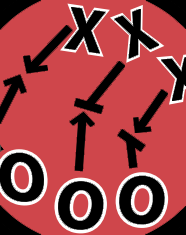And the Top 10 Strategies are ..
John Hattie has authored an exceptional work called Visible Learning: A Synthesis of Over 800 Meta-Analyses Related to Achievement. He identifies the degree to which 138 educational strategies impact learning. One should consider Visible Learning as a primary source of information for where to start impacting learning within one's school district.
Below is the Top Ten List of the most successful strategies.
-
Self-Report Grades
Students are very knowledgeable about their chances of success. On the one hand, this shows a remarkably high level of predictability about achievement in the classroom, but on the other had, these expectations of success (which are sometimes set lower than students could attain) may become a barrier for some students as they may only perform to whatever expectations they already have of their ability.
-
Piagetian Programs
Knowing the ways in which learners think, and how this thinking can be constrained by their stages of development may be most important to how teachers choose materials and task, how they concept of difficulty and challenge can be realized in different task, and the importance of developing successive and simulataneous thinking.
-
Providing Formative Evaluation
Formative evaluations were effective across student age, treatment duration, frequency of measurement, and special needs status. When teachers were required to use data and evidence based models, effect sizes were higher than when data were evaluated by teacher judgment. In addition, when the date was graphed, effect sizes were higher than when data were simply recorded.
-
Micro Teaching
Microteaching is a scaled-down, simulated teaching encounter designed for the training of both preservice or in-service teachers. It has been used worldwide since its invention at Stanford University in the late 1950s by Dwight W. Allen, Robert Bush, and Kim Romney. Its purpose is to provide teachers with the opportunity for the safe practice of an enlarged cluster of teaching skills while learning how to develop simple, single-concept lessons in any teaching subject.
Microteaching helps teachers improve both content and methods of teaching and develop specific teaching skills such as questioning, the use of examples and simple artifacts to make lessons more interesting, effective reinforcement techniques, and introducing and closing lessons effectively. Immediate, focused feedback and encouragement, combined with the opportunity to practice the suggested improvements in the same training session, are the foundations of the microteaching protocol.
-
Acceleration
An alternative to special classes for gifted children is to accelerate students through the curricula: "Accelerated instruction enables bright students to work with their mental peer s on learning tasks that match their abilities."
-
Classroom Behavioral
-
Comprehensive interventions for learning disabled students
Based on research, combined direct instruction and strategy instruction model is an effective procedure for remediating learning disabilities. These two approaches are somewhat independent, hens the importance of using both to maximize the effect on achievement. The important instructional components include "attention to sequencing, drill-repetition-practic, segmenting information into parts or units for later synthesis, controlling task difficulty through prompts and cues, making use of technology, systematically modeling problem solving steps, and making use of small interactive groups.
-
Teacher clarity
Teacher clarity defined as organization, explanation, examples and guided practice, and assessment student learning - such that clarity of speech was a prerequisite of teacher clarity. The correlation was 0.35 (d=0.75) and the effects were larger whens students, rather than observers, rated the teachers; for college rather than elementary school teachers; and class size and subject taught made no difference.
-
Reciprocal Teaching
Reciprocal teaching was devised as an instructional process to teach students cognitive strategies that might lead to improved learning outcomes (initially in reading comprehension). The emphasis is on teachers enabling their students to learn and use cognitive strategies such as summarizing, questioning, clarifying, and predicting, and these are "supported through dialogue between teacher and students as they attempt to gain meaning form text".
Each student takes a turn at being the "teacher", and often the teacher and students take turns leading a dialogue concerning sections of a text.
-
Feedback
When teachers seek, or at least are open to, feedback from students as to what students know, what they understand, where they make errors, when they have misconceptions, when they are not engaged - then teaching and learning can be synchronized and powerful. Feedback to teachers helps make learning visible.
GammaStream Technologies, Inc. & Aurora Learning Community Association
0.1873 and 10.08MB | v2014.03.15
